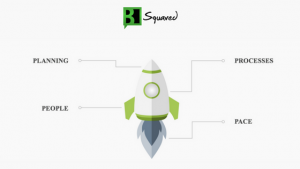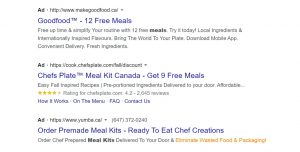
People spend most of their marketing effort driving visitors to their website. But getting people to your website is just the first step. Once they arrive, do they convert into quality inbound leads? If not, you most likely need to incorporate a strong website call to action so your visitors don’t leave without establishing some type of connection with your company.
There are several website design mistakes that small businesses make. But a critical mistake is not having a call to action that guides the visitor through the inbound marketing funnel. In fact, 70% of small business websites have no call to action and many more make blunders that cost them a conversion. Without a highly visible, relevant call to action to help your website visitor know what to do next, all that traffic you drive from your inbound marketing efforts is wasted.
What is a website call to action?
A call to action refers to active copy that elicits an immediate response such as watch a video demo, download a useful tool or sign up for your mailing list. Although we are focusing on their use on your website, calls to action are used in all types of marketing activities including advertising and email marketing. Some familiar ones are:
- Join our Email List
- Download your Free Guide
- Request a Free Consultation (or Demo, Estimate or Quote)
- Register for a Webinar
- Buy Now
Writing an effective call to action isn’t easy and requires you to understand your audience well enough to know what will drive them to action. In addition, you need to define different calls to action based on whether you are driving visitors via an inbound marketing campaign or visitors arrive at your website via organic search engine results.
Visitors arrive via organic search engine results
When visitors arrive at your website through organic search results, you aren’t quite sure where they are landing. Therefore, when you design your website, you need to have a clear goal about what you want your first time visitor to do and incorporate that throughout the site. A new visitor doesn’t know you yet, so your call to action has to be something that draws them in and builds awareness about what you can do for them.
You also need to incorporate other types of calls to action to move the visitor through the site. Calls to action such as hyperlinks that help walk the visitor through a set of pages, next and back buttons or hyperlinked phrases that link to other content on your website get your visitor to consume more of your pages and stay at your website longer.
Think through how you want to weave an effective call-to-action strategy into your website. Use a clear call to action on every page of your website and throughout your copy as appropriate. Don’t leave the path to success up to the visitor – guide them through the process with a flow that helps them make a decision.
Visitors arrive via an inbound marketing campaign
Marketing campaigns are developed with a specific goal in mind: create awareness, generate leads or sell a product or service. When visitors arrive at your website from a marketing campaign, you have more control over where they land and the specific call to action that you want them to take.
Your ad, whether it is Facebook or Google AdWords, piques your target audience’s interest and makes a compelling offer. When someone clicks on your ad, the job of the landing page is to continue the journey, from stranger to acquaintance to lead.
To do this, you need to make sure your landing page aligns with the ad in both content and design so that your visitor makes the connection and feels compelled to click on your call to action. Make the benefit of clicking the button clear and worthwhile. If the benefit isn’t clear to them, why bother click on the offer?
To be clear: your call to action is more than just a button. There are design techniques to make the buttons more effective, but if your offer and message are not relevant to your visitor, no matter how wonderful your button is, you won’t convert that visitor into a lead.
10 website call to action tips for higher conversion
- Define a clear objective for what you want your visitor to do and create your call to action to drive that outcome.
- Be clear about why the offer is valuable to your visitor – what’s in it for them? Give your target audience a reason why they should take the desired action
- Create a sense of urgency and take advantage of everyone’s fear of missing out. Deadlines will encourage people to act sooner than later.
- Use strong, action-oriented verbs and avoid “click here” whenever possible. Your call to action needs to catch the reader’s eye quickly.
- Use contrasting colors with your strong, action-oriented verbs to create call to action buttons that ensure it isn’t missed on the page.
- Put calls to action on every page but make them relevant to the content on the page. In your blog posts, have offers that align with the topic that is being discussed. This way your post works to lead the visitor to your offer.
- Place your call to action where it is most appropriate for your offer. Not all CTA buttons need to go “above the fold” (since we’re never sure exactly where it is anymore given the many devices being used).
- Don’t confuse your visitor with multiple competing calls to action in the same location. If you are driving visitors to a landing page, that page should have one specific action. Too many options will paralyze your visitor into taking no action.
- Create short forms and ask only for the information you need. Depending on the offer, you may need more information but try to avoid asking for anything you absolutely don’t need.
- Include the same call-to-action from the page in your meta description tag. This call to action will appear in search engine listings and will encourage searchers to click through to your website from the major search engines.
Don’t leave it to chance that the visitor will figure out what they are supposed to do and actually do it. Understand the goal of your website and create compelling offers for your visitors that help convert new visitors into leads and potentially new customers.
Where have you used calls to action successfully? Share your success stories in the comments below.
Digital & Social Articles on Business 2 Community(27)





